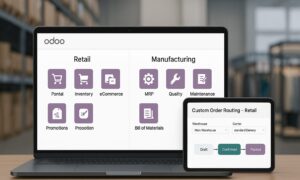Digital transformation is an ambitious task for almost any business, no matter what industry they belong to. This requires institutional change, which requires the active participation of all those involved. The role of digital transformation in manufacturing is quite evident in recent years because of the different technologies that have helped to simplify tasks.
As a labor-intensive sector, industrial production finds mostly few enthusiasts because the notion of digital transformation fuels fears that tools like automation could kill jobs. However, digital transformation is now proving to be more than a necessity to keep businesses afloat. Therefore, leaders can no longer ignore the fact that they are going to have to embrace it and create a roadmap for digital transformation.
Since when developing a strategy, you have to anticipate the challenges posed, here are some obstacles to expect during your digital transformation:
Fear of Change
As noted above, the strongest resistance you can anticipate is from your employees. Fear of job security or a job change will make your employees grasp the digital transformation. It is also closely related to the way we humans generally function. There is comfort in monotony, and experiencing changes is quite disturbing.
Therefore, when you announce the decision to achieve digital transformation, you should follow it by challenging the misconceptions surrounding it and amplifying its related benefits. Educating, empowering your employees, and improving their skills could further inspire them to join the movement.
Bridging the Talent Gap
Even if you want to keep your employees and train them to help them take on their new roles, there will be many positions to fill. Now, as digital transformation requires cutting-edge skills, you might struggle to find the right talent. Currently, the world faces a serious mismatch between the skills and experiences of staff versus the roles sought.
Maintain Cybersecurity
When talking about a manual operation, cybersecurity may not be considered an important factor. However, when digital technologies are added to this combination, it takes on great significance.
With the popularity of the Industrial Internet of Things (IIoT), you will need to process real-time data that plays a critical role in managing your assets. And as your facility converges into an IT infrastructure and spawns networked devices, you will need to take steps so that such communication channels can be safe and secure at all times.
Adopt an Approach Prioritizing Technology
It should be noted that following a data-centric approach can be difficult. Extracting or generating data is not enough, and you will need to find ways to use it.
Whether you need data to identify sticking points or set up an automated operation, the data must be available in a usable format. Considering the fact that the industrial production sector can generate large volumes of data, you must also proportion the data processing capacities to extract the meaning from it.
As evidenced by the digital transformation, it will be necessary to introduce several tools and techniques; It is, therefore, essential to instill a technophile mindset from the start.
Restructure Business Models
Needless to say, digital transformation can tackle the deep roots of your manufacturing business.
Because of the dizzying nature of this change, you will need to restructure the entire business model to accommodate the digital transformation. Such changes are not easy to grasp and can range from investing in digital tools and technologies to redesigning your shop floor.
Every transformation, no matter how small, will require firm commitment and meticulous planning. As a result, companies must also prepare to assume the impacts and innovate to adapt to fundamental changes.
Adapt to Extensibility
When properly implemented, digital transformation in the industrial production sector can offer great flexibility and almost infinite scalability. However, the intermediate stages of digital transformation, which involve large-scale experimentation, significantly decrease the scalability of your operations. You can observe insignificant inflexibility even when compared to manual operations!
For example, during the downtime during recruiting, the onboarding of a new employee and training, production, or innovation will come to a standstill. As a result, your ability and time to market may suffer, even if this is transitional and temporary. Therefore, if you want to ensure business continuity, you may need to develop alternative solutions to facilitate this process.
Final Thoughts
While digital transformation can offer many possibilities, it also comes with its share of challenges. However, when deciding to take the plunge, it’s best to stick with it and fight the brakes.
Your first line of action should include developing a reliable digital transformation guide that will include a clearly defined starting point and end results. And while you’re at it, prioritize integrating your existing system into the new business model, in case you’re planning a complete overhaul. In any case, the game is worth the candle since you will reap the benefits in the long term!



































